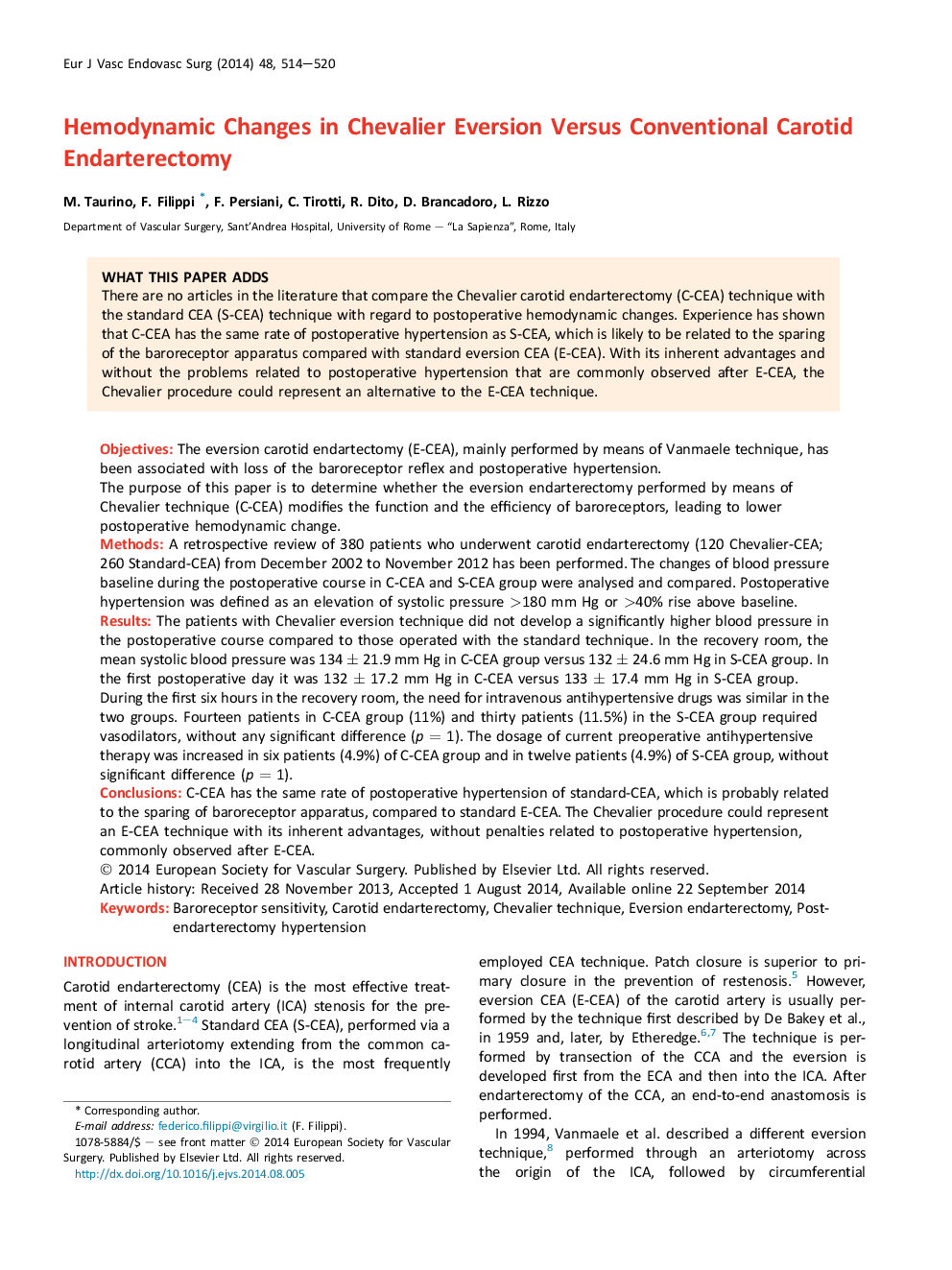| کد مقاله | کد نشریه | سال انتشار | مقاله انگلیسی | نسخه تمام متن |
|---|---|---|---|---|
| 5957812 | 1575448 | 2014 | 7 صفحه PDF | دانلود رایگان |

ObjectivesThe eversion carotid endartectomy (E-CEA), mainly performed by means of Vanmaele technique, has been associated with loss of the baroreceptor reflex and postoperative hypertension.The purpose of this paper is to determine whether the eversion endarterectomy performed by means of Chevalier technique (C-CEA) modifies the function and the efficiency of baroreceptors, leading to lower postoperative hemodynamic change.MethodsA retrospective review of 380 patients who underwent carotid endarterectomy (120 Chevalier-CEA; 260 Standard-CEA) from December 2002 to November 2012 has been performed. The changes of blood pressure baseline during the postoperative course in C-CEA and S-CEA group were analysed and compared. Postoperative hypertension was defined as an elevation of systolic pressure >180 mm Hg or >40% rise above baseline.ResultsThe patients with Chevalier eversion technique did not develop a significantly higher blood pressure in the postoperative course compared to those operated with the standard technique. In the recovery room, the mean systolic blood pressure was 134 ± 21.9 mm Hg in C-CEA group versus 132 ± 24.6 mm Hg in S-CEA group. In the first postoperative day it was 132 ± 17.2 mm Hg in C-CEA versus 133 ± 17.4 mm Hg in S-CEA group.During the first six hours in the recovery room, the need for intravenous antihypertensive drugs was similar in the two groups. Fourteen patients in C-CEA group (11%) and thirty patients (11.5%) in the S-CEA group required vasodilators, without any significant difference (p = 1). The dosage of current preoperative antihypertensive therapy was increased in six patients (4.9%) of C-CEA group and in twelve patients (4.9%) of S-CEA group, without significant difference (p = 1).ConclusionsC-CEA has the same rate of postoperative hypertension of standard-CEA, which is probably related to the sparing of baroreceptor apparatus, compared to standard E-CEA. The Chevalier procedure could represent an E-CEA technique with its inherent advantages, without penalties related to postoperative hypertension, commonly observed after E-CEA.
Journal: European Journal of Vascular and Endovascular Surgery - Volume 48, Issue 5, November 2014, Pages 514-520